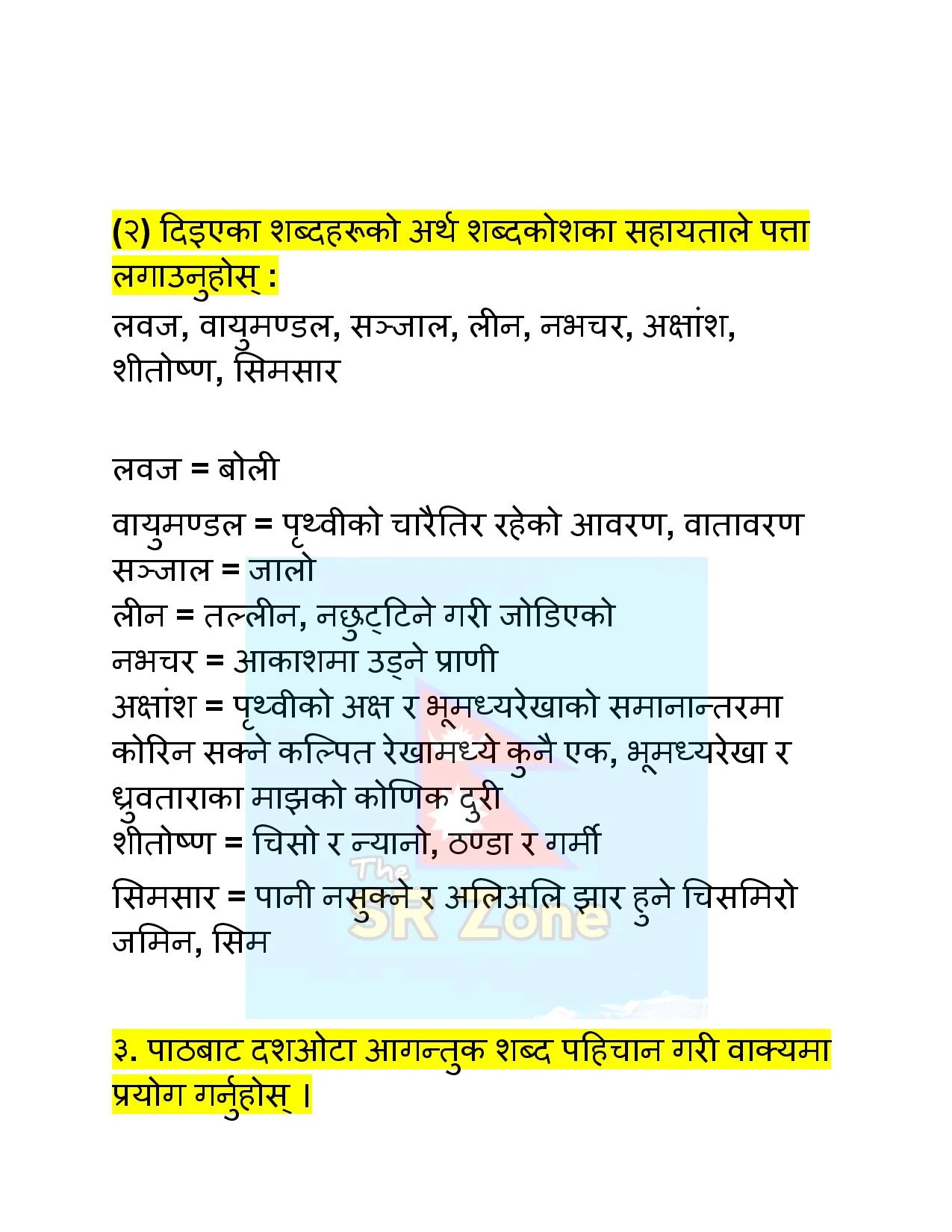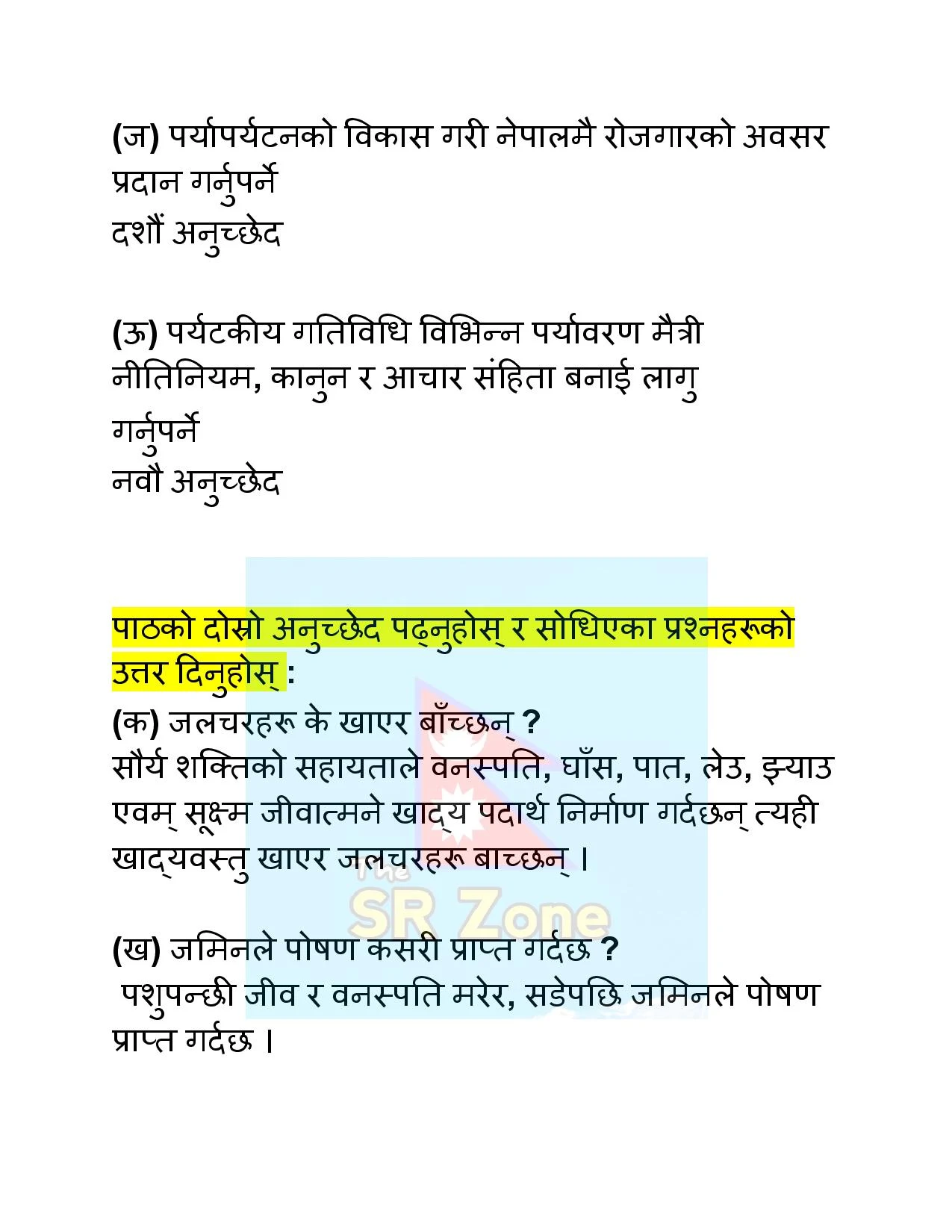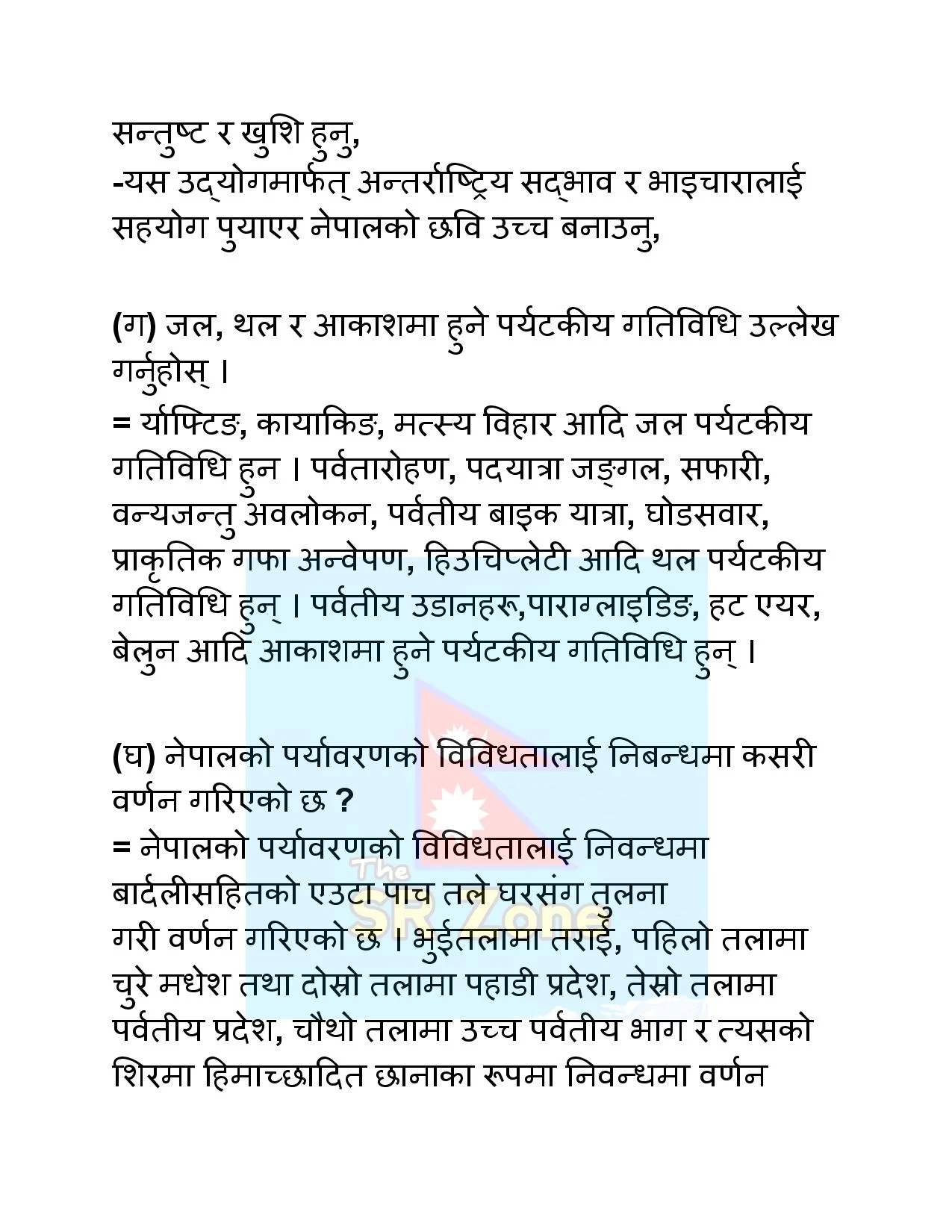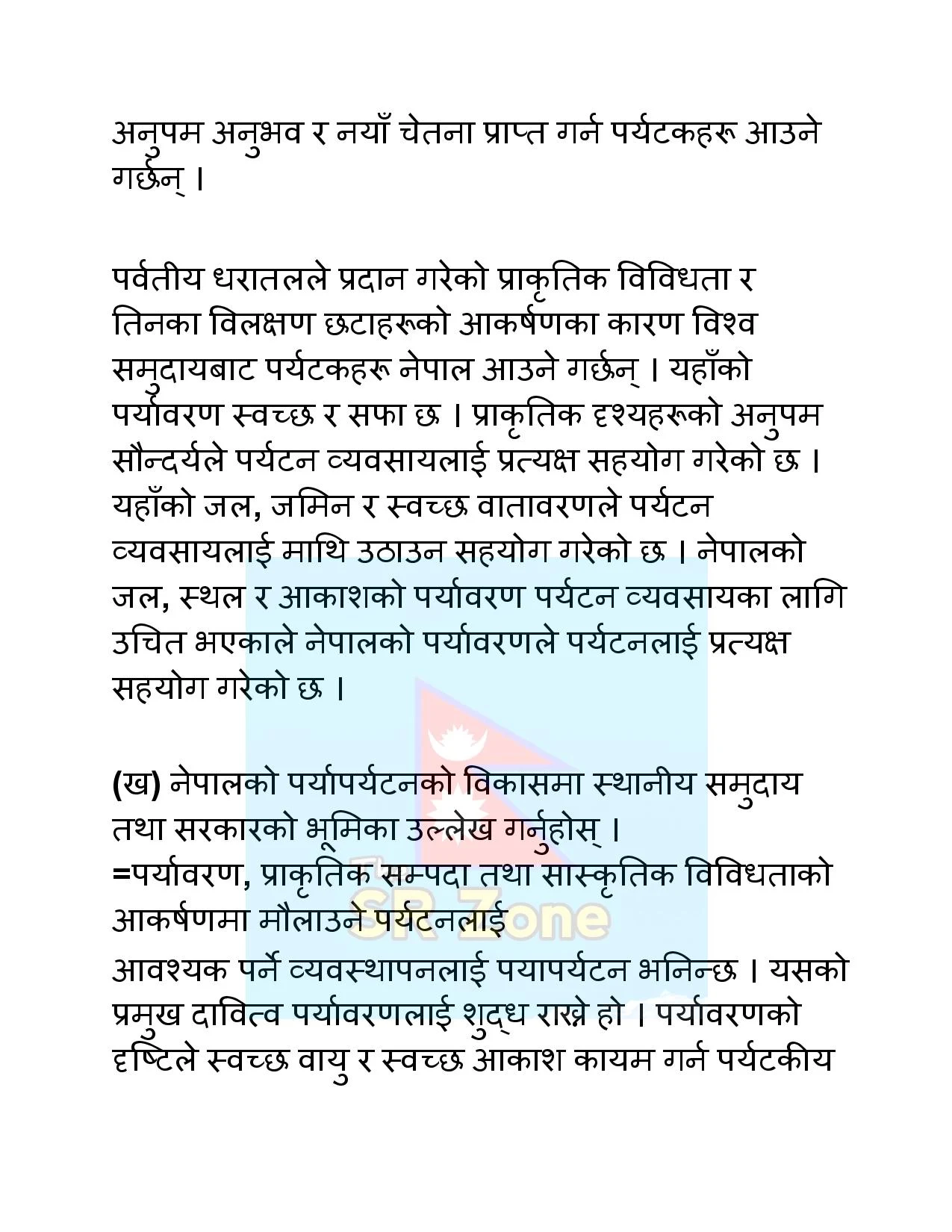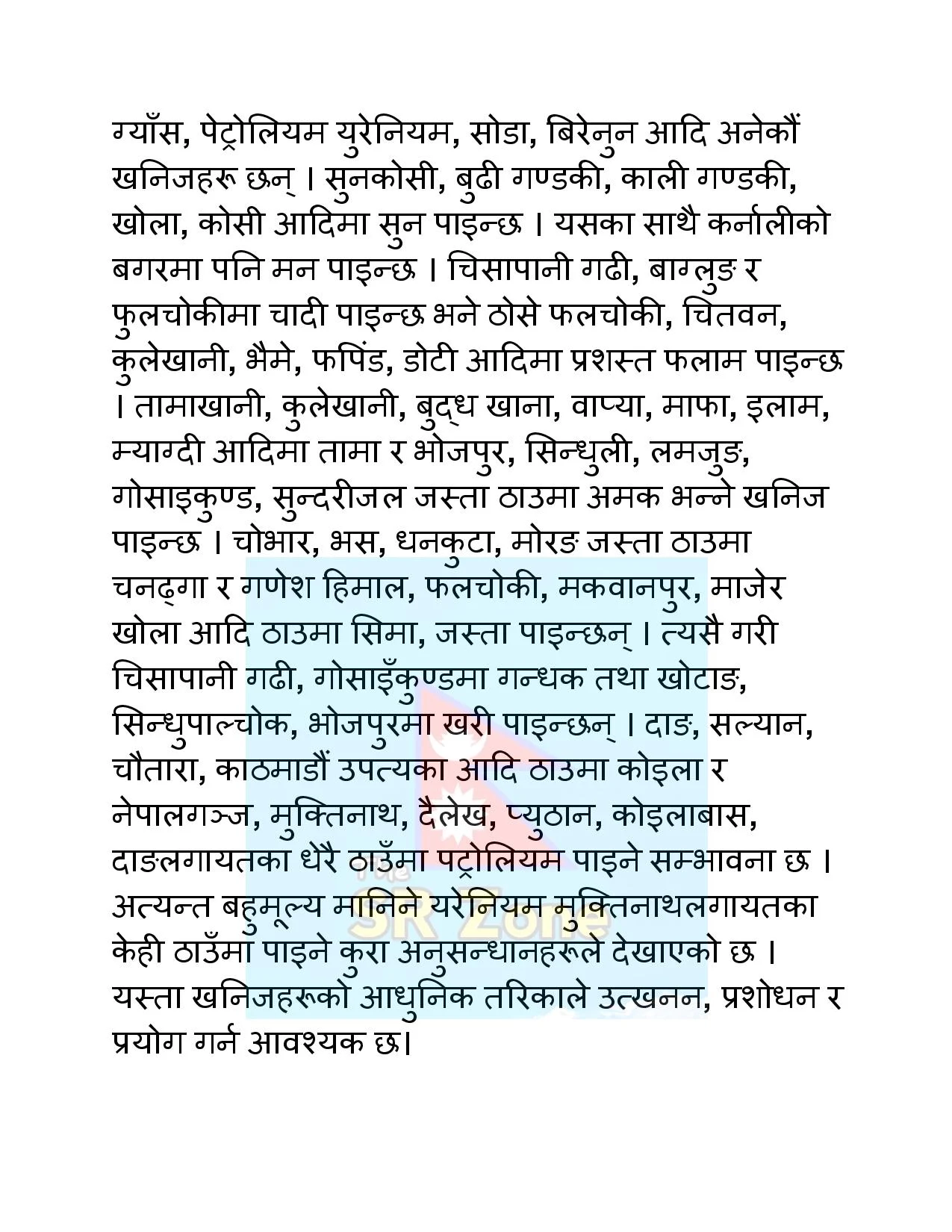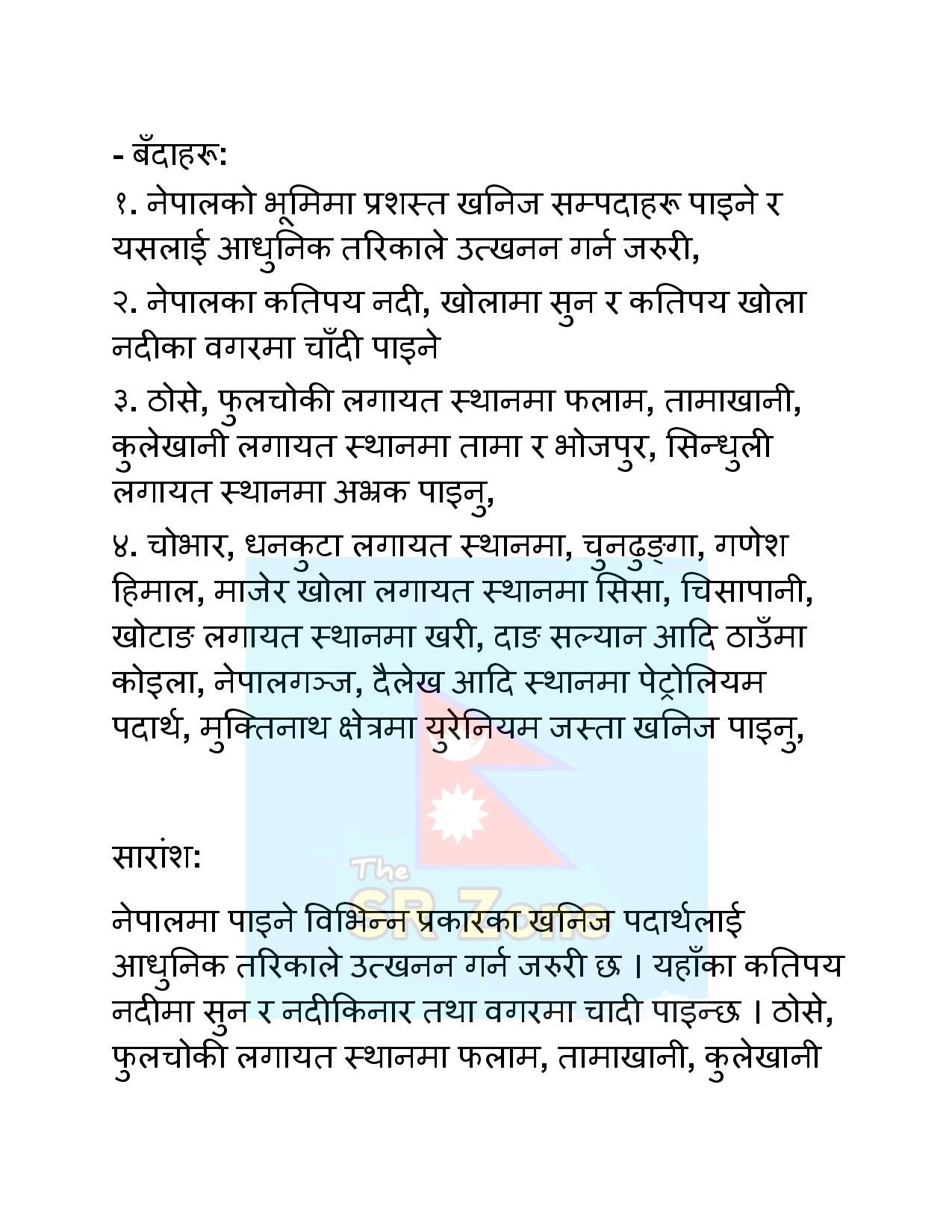Class 11 Nepali Chapter 7: Paryaparyatanka Sambhabana ra Aayam Exercise Notes
Author: Shriram Lamichhane
Also Read:
If you are in search of Solutions (Notes) of Class 11 Nepali Chapter 7: Paryaparyatanka Sambhabana ra Aayam, then you are on the right place. This post contains Question and Answer and summary of “Paryaparyatanka Sambhawana ra Aayam”. This essay is by Tirtha Bahadur Shrestha.
In this chapter, the association between environment, biodiversity and tourism is discussed. It presents a scientific perspective on how Nepal's ecological diversity can serve as a cornerstone for sustainable tourism.
Paryaparyatan ka Sambhabana ra Aayam Exercise – Chapter 7
Answers to all questions from this unit are written in plain-and-simple language. These are the notes for Class 11 students awaiting their class 11 NEB examination.
Summary of “Paryaparyanka Sambhabana ra Aayam” (Sprawling Tourism: Possibility and Dimension)
In the essay, Nepal’s ecosystem and its relationship with tourism are analyzed. It starts from the prefix “eco” by which it unfolds the holistic vision of humanity, the nature and all the living and non living things together.
Earth is the only planet known to support life. From tiny ponds to vast oceans, the world is a melting pot of a food web. Anything that disrupts the system endangers all life forms, including humans.
The essay also compares the geography of Nepal to be as a five storey tower.
- Ground floor: Terai
- Ground floor: Chure Madhes and Bensi
- Second floor: Hilly region
- Third floor: Uplekali (higher hilly)
- Fourth floor: High mountain (Lekali)
- Top: Snowy mountains
Nepal is beautiful and has a great variety of scenery that brings tourists from every corner of the globe. But this influx of tourism needs to be well managed. Tourism is not supposed to be bad for the environment. Rather, it must serve the purposes of conservation and livelihood generation.
Nearly 11 lakh foreign tourists visit Nepal every year. The goverment plans to grow this section while preserving the ecosystem.
Trekking, mountaineering, boating, paragliding are some of the most popular adventure sports included in the eco-tourism of Nepal. The essay argues that the tourism should be green, with the hosts and guests taking responsibilities to protect the environment.
Forms of tourism highlighted include:
- Rural tourism
- Cultural tourism
- Religious and spiritual tourism
- Educational and research-based tourism
The author highlights the necessity of clear rules, ecologically oriented policies, and the engagement of the local population in order to guarantee a sustainable development of tourism.
Main Message
Tourism would be a big earner for Nepal, and it could also be a stanchion of the newer Nepal’s economy—if done with environmental awareness. It is the balance between developmentalism and conservationism that drives this chapter. It has to be made attractive for the youth to remain in the country and be a part of this movement through eco-tourism and patriotism towards one’s own culture.

